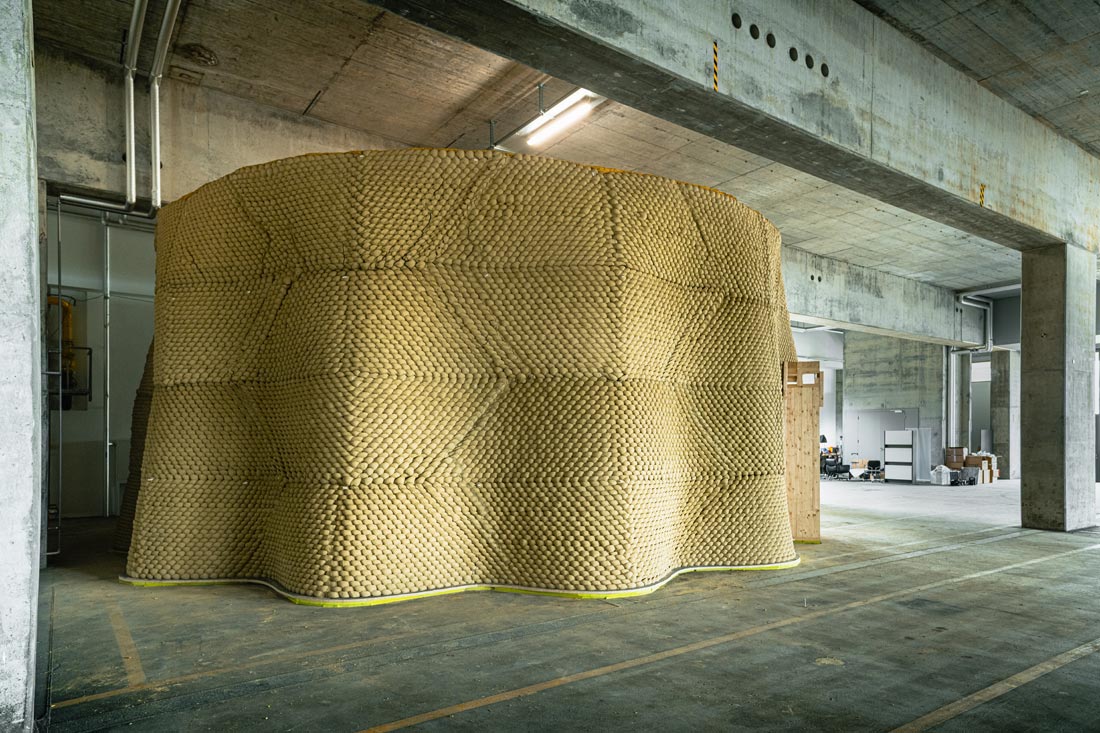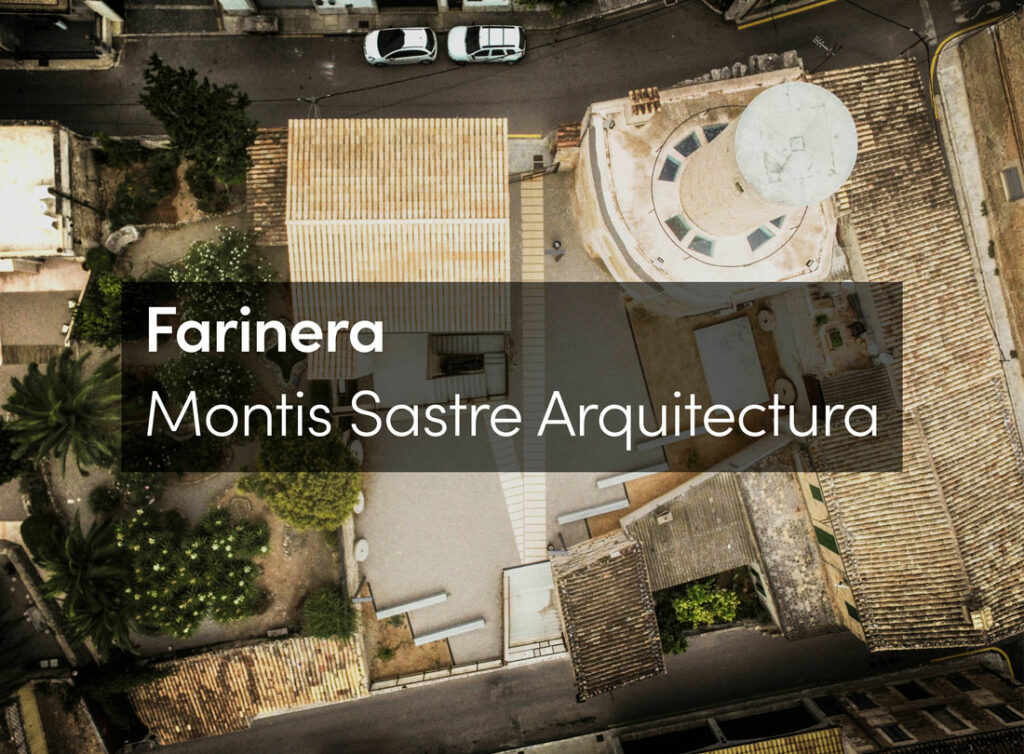The Clay Rotunda is a free-standing earth-based cylindrical structure constituting the outer, soundproof shell of the SE MusicLab, a high-fidelity music auditorium built inside the newly refurbished Gurten Brewery in Bern. The cylindrical structure combines clay, a sustainable zero-waste building material, with computational design techniques. Featuring a diameter of almost 11 meters the structure reaches a height of 5 meters with just 15 cm of unreinforced clay. It was built in-situ by a mobile robotic system that aggregated over 30,000 soft clay bricks over a period of 50 days.
Clay Rotunda, SE MUSICLAB, Bern, 2020-2021 © Gramazio Kohler Research, ETH Zürich. Photo: Michael Lyrenmann
Clay Rotunda, SE MUSICLAB, Bern, 2020-2021 © Gramazio Kohler Research, ETH Zürich. Photo: Michael Lyrenmann
Design
The extreme slenderness of the Clay Rotunda is made possible by its undulated design, which allows to increase the footprint and stabilize the structure in order to prevent buckling effects. The computational model that controls the geometry of this thin shell was designed by taking into account the structural models of the engineers and the material properties of the clay, as well as the sequencing of the building process. In fact, the limited reach of the robotic arm and the shrinking of the material while drying demanded the implementation of complex strategies for the horizontal and vertical segmentation of the structure into matching trapezoids. The computational model also allowed computing the building sequence within each segment as well as the position of each one of the 30,000 clay cylinders. The particular orientation in which the robotic arm pressed them onto the structure was particularly important to ensure proper bonding between the different segments. Finally, the model contains all the fabrication data needed to run the robotic process that allows the realization of bespoke structures of unmatched geometric complexity.
Clay Rotunda, inner view detail with door, SE MUSICLAB, Bern, 2020-2021 © Gramazio Kohler Research, ETH Zürich. Photo: Michael Lyrenmann
Clay Rotunda, inner wall detail, SE MUSICLAB, Bern, 2020-2021 © Gramazio Kohler Research, ETH Zürich. Photo: Michael Lyrenmann
Material and Process
The optimization of the material system is key for the performance of the structure. For the Clay Rotunda different compositions of clay, sand, small stones, and water have been tested with the aim of finding the best balance between the malleability needed by the fabrication process, the highest compressive strength, and the minimal material shrinkage. The developed clay mix is extruded into so-called soft bricks, cylinders with a diameter of 9 cm and a height of 15 cm, which are grabbed by the robotic arm from a picking station, precisely oriented, and sequentially pressed into their final position. The compression of about 60% of the original height assures a strong and interlocking aggregation, leading to a soft bond that expresses both the plasticity of the material and the dynamic forces of the fabrication process. The custom robot – the in-situ fabricator – had to be moved for every single segment in order to address the full scale of the structure. This relocation of the robot, as well as the deformation of the fresh material caused by its shrinkage, required a regular acquisition of the as-built geometry through 3D scanning. The unavoidable cracks that resulted from the drying process were actively monitored and regularly filled with the same clay mix.
Clay Rotunda, detail view of the soft bond, 2020-2021 © Gramazio Kohler Research, ETH Zürich. Photo: Michael Lyrenmann
Clay Rotunda, fabrication of the soft-bricks at Brauchli Ziegelei AG, 2020-2021 © Gramazio Kohler Research, ETH Zürich. Photo: Coralie Ming
Sustainability
The Clay Rotunda addresses the urgent need of reducing the material consumption as well as reverting to emission-free materials for the fabrication of our built environment. The robotic clay aggregation process combines the traditional knowledge of clay constructions with contemporary digital design and fabrication processes. The increased degree of control over both material and process allows for building complex structures that go beyond what has traditionally been possible. Clay also has excellent properties in regulating the interior climate of buildings, thus reducing the need for mechanical ventilation and creating comfort for all inhabitants. Finally, earthen constructions are entirely waste-free, since the used clay mix can be ground and fully reused. What is taken from nature can be returned entirely to nature.
Clay Rotunda, fabrication setting with robotic arm, SE SEMUSICLAB, Bern 2020-2021 © Gramazio Kohler Research, ETH Zürich. Photo: Indra Santosa
Clay Rotunda, human machine collaboration: Edurne and the mobile robot on site, SE MUSICLAB, Bern, 2020-2021 © Gramazio Kohler Research, ETH Zürich. Photo: Coralie Ming
Partnerships
The Clay Rotunda has acted as a catalyst for the knowledge transfer between research and industry. It has been realized in collaboration with multiple partners that contributed to its successful realization with their specific knowledge and experience: Lehmag, a construction company specialized in earthen construction and interested in combining new technologies with traditional construction methods; Seforb, an engineering company with a focus on the structural design of earthen structures; and Brauchli Ziegeleien, a leading brick producer committed to a less CO2-intense brick production. Finally, this innovative architectural experiment would not have been possible without the vision and engagement of the client and initiator, SE MusicLab.



















